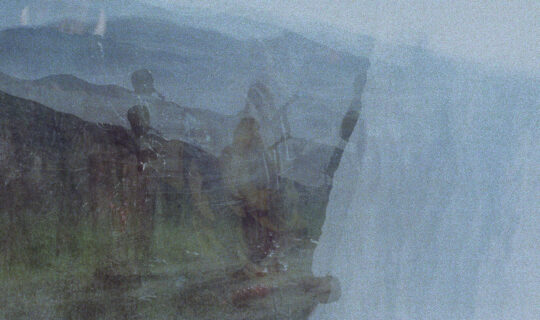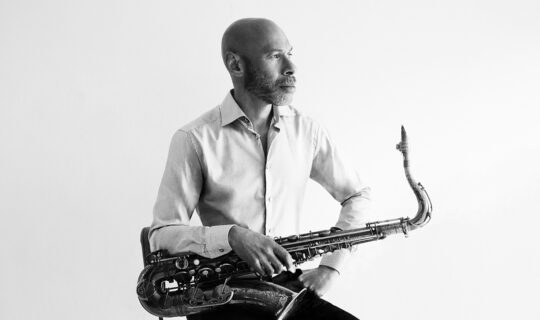December 30, 2012
It’s a long-standing record company practice to close the doors for the week between Christmas and New Year’s Day, reopening on January 2. But once a New Year began, Blue Note artists were frequently itching to get back into the studio. Let’s take a look back at some classic albums—by artists like Sonny Clark, Blue Mitchell, Jimmy Smith and Stanley Turrentine—all recorded in the first week of a brand-new year.
On January 5, 1958, pianist Sonny Clark showed up on Rudy Van Gelder’s doorstep with trumpeter Art Farmer, alto saxophonist Jackie McLean, bassist Paul Chambers and drummer Philly Joe Jones, ready to cut one of the most revered albums in Blue Note’s 1950s catalog—Cool Struttin’. This iconic hard bop date was a great way to kick off a year that would also see landmark releases by Cannonball Adderley, Art Blakey, Lou Donaldson, Lee Morgan, Jimmy Smith and many more. Cool Struttin’ is beloved for many reasons: It includes a title track that’s pure simmering blues, as well as the Latin-inflected “Blue Minor,” a romping take on Charlie Parker’s “Sippin’ at Bells,” and more. Clark’s piano playing blended understated groove and an affinity for somewhat melancholy minor chords with a remarkable melodic sensibility, and he’s the perfect pivot point, balancing the rock-solid swing of the rhythm section and the smooth yet soulful solos from the horns.
On January 4, 1960, organist Jimmy Smith—one of Blue Note’s most prolific artists, putting out multiple albums each year—was in the studio with his regular group, recording Crazy! Baby, the first of five albums he’d make (at three sessions) that year, including possibly his best-known title, Back at the Chicken Shack. A stripped-down date featuring only Smith, guitarist Quentin Warren and drummer Donald Bailey, Crazy! Baby features a mix of standards old and new (“Makin’ Whoopee,” “Sonnymoon for Two,” “A Night in Tunisia,” “Mack the Knife”), the Smith original “Alfredo,” and one unexpected choice—the 19th Century traditional song “When Johnny Comes Marching Home,” which the trio manage to convert from a mournful march into an exuberant, funky groove. His almost underwater organ sound on “Makin’ Whoopee” turns a sultry ballad into a strut, with Warren’s sharp guitar keeping perfect pace with him and Bailey’s measured yet aggressive hi-hat and brush work injecting subtle doses of adrenaline.
Nineteen sixty-two had barely gotten underway when Stanley Turrentine took his quartet into the studio. Backed by pianist Les McCann, bassist Herbie Lewis and drummer Otis Finch, the saxophonist cut the red-hot soul jazz album That’s Where It’s At on January 2. With three of its tracks—“Smile, Stacey,” “Soft Pedal Blues,” and “We’ll See Yaw’ll After While, Ya Heah”—released as jukebox 45s, this was not a subtle album. This was music made for drinking and tapping one’s foot, with even the wild card—a version of Thelonious Monk’s “Light Blue”—a gutsy, swinging journey into the blues. The hooks were brash and forceful, Turrentine’s fervid solos matched by McCann’s wild, gospel-meets-barroom runs on the keyboard, and the rhythm section’s relentless drive. Turrentine’s tremendous talent on the horn was always focused toward pleasing the crowds he drew, and That’s Where It’s At is no exception.
Surprisingly, though Blue Note had incredibly productive years in 1963, 1964 and 1965, there were no sessions held before the middle of January. The first player out of the gate in 1966, though, was trumpeter Blue Mitchell, who entered the studio on January 6 to make the ferociously funky if somewhat overlooked album Bring It Home To Me. A quintet session featuring tenor saxophonist Junior Cook, pianist Harold Mabern, bassist Gene Taylor and drummer Billy Higgins, it’s a rocking hard bop album very much in the vein of Lee Morgan efforts like The Sidewinder or The Rumproller, though Mitchell was a slightly more subdued player than the fiery Morgan. The title track is an absolute classic of mid ’60s hard bop, with both horns blowing at full force as the rhythm section tears up ground behind them. The album also contains a terrific, gospel-inflected interpretation of Miles Davis’s “Gingerbread Boy” and the standard “Portrait of Jennie,” as well as the swaying Latin number “Port Rico Rock” and the hard-hitting “Blue’s Theme,” which Billy Higgins launches with his machine-gun snare.
Organist Lonnie Smith was Blue Note’s leadoff player as the Sixties drew to a close, first into the studio two years running. On January 3, 1969, he cut Turning Point with a sextet that included Lee Morgan on trumpet, Julian Priester on trombone, Bennie Maupin on tenor sax, Melvin Sparks on guitar and Leo Morris on drums. A funky, hard-driving session that includes a version of the Beatles’ “Eleanor Rigby,” it does a terrific job of bridging the worlds of jazz, funk, rock and soul. The cover has a psychedelic shimmer to it, Smith’s smooth journey through the melody line accented by punchy work from the trio of horns, and an oddly time-suspending feel from Sparks’ guitar. And “People Sure Act Funny” kicks off with what may be one of the great breakbeats of all time, a thick, funky groove that’s surprisingly only been sampled on a few hip-hop records.
One day shy of a year later, on January 2, 1970, Smith was back in the studio, cutting the currently out of print Drives. Like Turning Point, it was a mix of jazz, funk and rock, including a cover of “Spinning Wheel” by Blood, Sweat and Tears (a song the Godfather of Soul himself, James Brown, recorded the same year on Sex Machine). The band on Drives featured tenor saxophonist Dave Hubbard, baritone saxophonist Ronnie Cuber, guitarist Larry McGee and drummer Joe Dukes, and they laid down one head-bobbing, funky track after another. The album wasn’t just about greasy grooves, though; the group also essayed a terrific, swinging version of Miles Davis’s “Seven Steps to Heaven,” and the hard-charging “Twenty Five Miles” was the perfect soundtrack to hitting the highway and stomping the gas pedal. The band even turned the theme from Who’s Afraid of Virginia Woolf? into a soulful romp, with Dukes cutting up the rhythm like the pioneering hip-hop DJs who’d be rocking Bronx parties only a few years later.
All of these terrific albums demonstrate that great musicians can’t sit idle for too long—taking a break over the holidays only inspires them to hit that much harder when they get back into the studio at the start of a new year.




